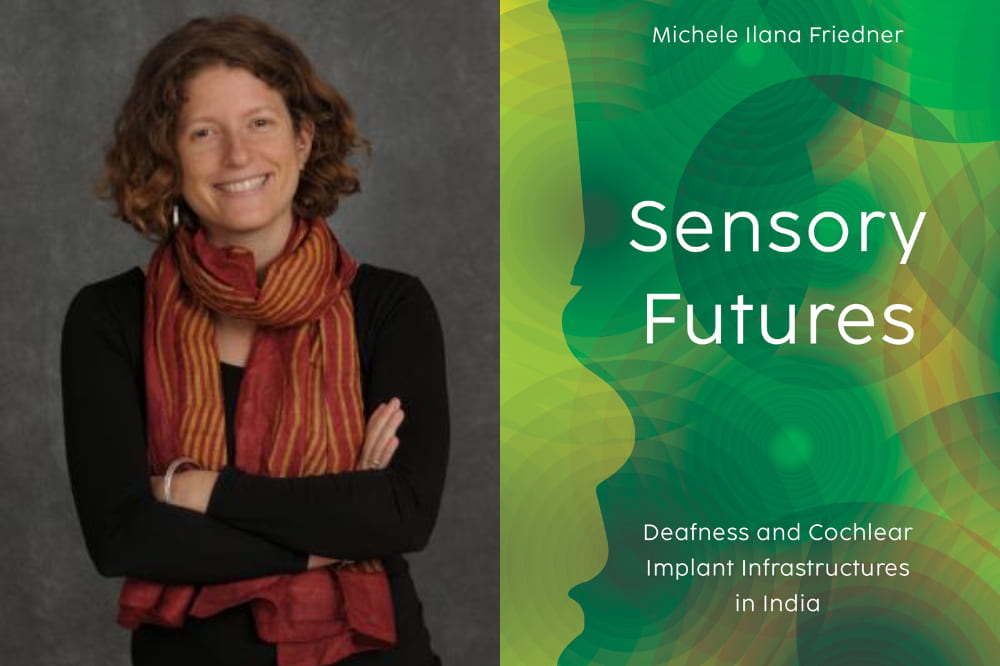Q: Congratulations on the launch of your new book Sensory Futures. Can you provide a brief summary of the work?
The book looks at central and state government programs providing deaf children below the age of 6 with cochlear implants. It also looks at the emergence of a growing private cochlear implant market. In doing so, it looks at how cochlear implantation has brought new therapeutic, communicative, and relational practices to Indian families, with mothers as a key focus. The book looks at the complex (inter)dependencies that exist between multinational cochlear implant manufacturers, the state, and families as these different stakeholders have varying ideas of outcomes. It also broadly argues that normalization projects are essentially projects that involve narrowing or contraction: To become and to be normal involves constricting sensory, modal, and relational possibilities and ways of engaging in the world.
Q: When and how did you first become interested in the subject of Sensory Futures?
My first book, Valuing Deaf Worlds in Urban India, looked at the experiences of Indian Sign Language-speaking deaf young adults as they worked towards what they called “deaf development,” or futures in which Indian Sign Language was valued and education, livelihood, and interworldly connections could be found in and through Indian Sign Language. I did this research from 2007-2015, more or less. When I returned to India in 2016, I learned about the different cochlear implant programs and observed that cochlear implants were becoming more ubiquitous. I was curious about how the central government was focusing on both developing Indian Sign Language AND cochlear implant programs. I also learned from deaf adults that they were worried about the future of deaf people and Indian Sign Language in India.
Q: How did you go about doing this research and collecting data? What was the most intriguing or unexpected part of the process?
I started by interviewing surgeons, speech and language therapists, and audiologists. I also interviewed government administrators and spent time with families. I spent lots of time in public hospital waiting rooms, early intervention centers for deaf children, and at “fancy” cochlear implant conferences. I was lucky and stakeholders introduced me to each other. I worked with undergraduate students and colleagues for this research– they accompanied me to various sites and also translated for me when I needed it. I loved the process of doing research with other people.
Q: What challenges, if any, did you face when writing the book?
Since I am not a re/habilitation professional, cochlear implant industry folks were sometimes suspicious of me, especially because I had written a previous book about Indian sign language speakers. At one point at a conference, an audiologist questioned my right to be present at an annual industry conference. I also struggled to make sure I understood the medical and audiological literature I was reading. And to be honest, I found some of the discourses around normalization, and the idea that deaf children with implants are normal, to be quite upsetting. I also found issues of maintenance– the fact that deaf children and their families cannot maintain these very expensive devices– to be incredibly ethically challenging. I met so many families who had their children implanted and then could no longer afford to maintain the devices. The families had not been informed about Indian Sign Language and did not have a sense of other linguistic or communicative paths on which to embark.
Q: Do you have any upcoming projects or events to follow the launch of your new book?
I still have some data that I am working through right now, interviews with families who cannot maintain their devices, and I am trying to understand what happens after becoming a “non-user.” In particular, I am interested in what it is like for a child to hear one day and not hear another and how they adapt and adjust to not hearing. I’ve been looking at neuroscience research for this as well. I understand what is happening socially and familiarly, but I am also interested in what we might say is happening on the level of “the brain,” as so much of the discourse used by professionals in the field of listening and spoken language is that it is possible for deaf children to have hearing brains if there is an intervention early enough. What happens when that intervention goes away?
Q: What advice would you give to students interested in similar research?
Disability in India is such a fascinating, rich, and important topic. There are lots of different stakeholders, from NGOs to government officials to doctors to families, and there is so much at stake both empirically and analytically.
